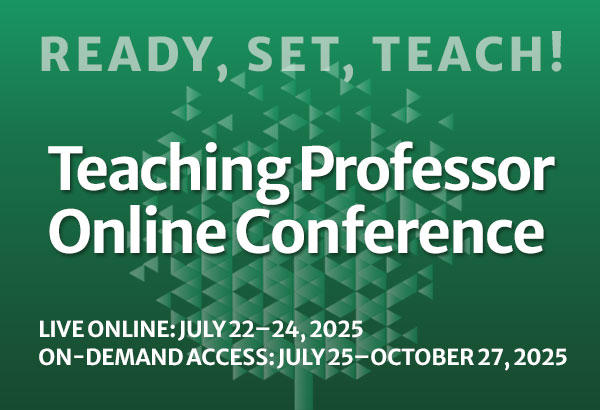In reviewing the research on active learning in statistics, the authors of the article cited below, who are statistics faculty themselves, found some research in which certain active learning experiences did not produce measurable gains on exam performance. They “suspect the key components of successful active learning approaches are using activities to explain concepts and requiring students to demonstrate that they understand these concepts by having them answer very specific rather than general questions.” (p. 3)
To that end, they designed an introductory behavioral/social science statistics course using what they describe as a “workbook curriculum.” Students read a short chapter (five single-spaced pages) introducing a topic. After reading, students answered questions, completed a problem, and summarized the results of their computation. Then they submitted this homework assignment online before class and got feedback on their work, also before class. These homework assignments counted for 17 percent of their course grade.
In class, the instructor began by answering questions about the homework and followed that with a brief lecture during which information in the reading was reviewed. Typically this consumed 15 to 20 minutes of the 75-minute period. Then students completed a “workbook” activity. “As students worked through each subsection, they answered increasingly complex conceptual and/or computational questions” (p. 6). They could access answers while they worked. The instructor was also available to answer questions. Students were encouraged but not required to work with a partner. The instructor ended the period with another short lecture summarizing the content presented in the workbook activity. Workbook answers were not graded. Grades were based on the homework assignments, four exams, and a final. Basically, every day in class was structured this way.
To study the effects of students’ exposure to this kind of active learning experience, the faculty researchers looked at student attitudes toward statistics. They measured these with an already developed instrument, Survey of Attitudes Towards Statistics (SATS), which contains 36 items and six subscales, including these three examples: one measuring student feelings toward statistics (the affect subscale), another measuring student beliefs about their ability to understand statistics (the cognitive competence subscale), and one measuring student beliefs about the usefulness of statistics in their lives (the value subscale). The 59 students who experienced the workbook curriculum completed this survey before and at the end of the course. The researchers also looked at the effects of this course design on exam scores and final course grades.
The attitudes and performance of students in the experimental group were compared with the attitudes and performance of 235 students in 20 other sections of courses similar to this one. All were general education courses that fulfilled quantitative requirements. All enrolled 30 or fewer students and required a prerequisite course in algebra.
The results confirmed the value of extensive active learning experiences in a course. “Our sections reported liking statistics significantly more than the comparison group (i.e., more positive affect scores). Our students also reported significantly higher statistical cognitive competence (i.e., confidence in their ability to understand and perform statistical procedures) than the comparison group. While students in our sections thought statistics was harder than the comparison group they also liked statistics more than the comparison group.” (p. 9)
“We suspect that most statistics instructors would want their students to report they like and understand statistics; however, we also suspect that most instructors are more concerned with their students’ actual ability to perform and understand statistics.” (p. 9) And their results did show that those more positive attitudes were positively associated with performance on the course’s comprehensive final.
The instructors also felt their teaching benefited from the approach. They were able to interact with individual students more often. They found themselves using student names more often, answering questions more frequently, and offering more feedback to individual students. They did find some student questions challenging. “Instructors must be comfortable ‘thinking on their feet.’ For our part, we found the unpredictability of students’ questions to be invigorating. We had become bored with teaching statistics but when we changed to the workbook approach, we were again excited about teaching the course.” (p. 13)
Reference: Carlson, K. A. and Winquist, J. R. (2011). Evaluating an active learning approach to teaching introductory statistics: A classroom workbook approach. Journal of Statistics Education, 19 (1), 1-22.
Reprinted from The Teaching Professor, 26.3(2012): 3.





